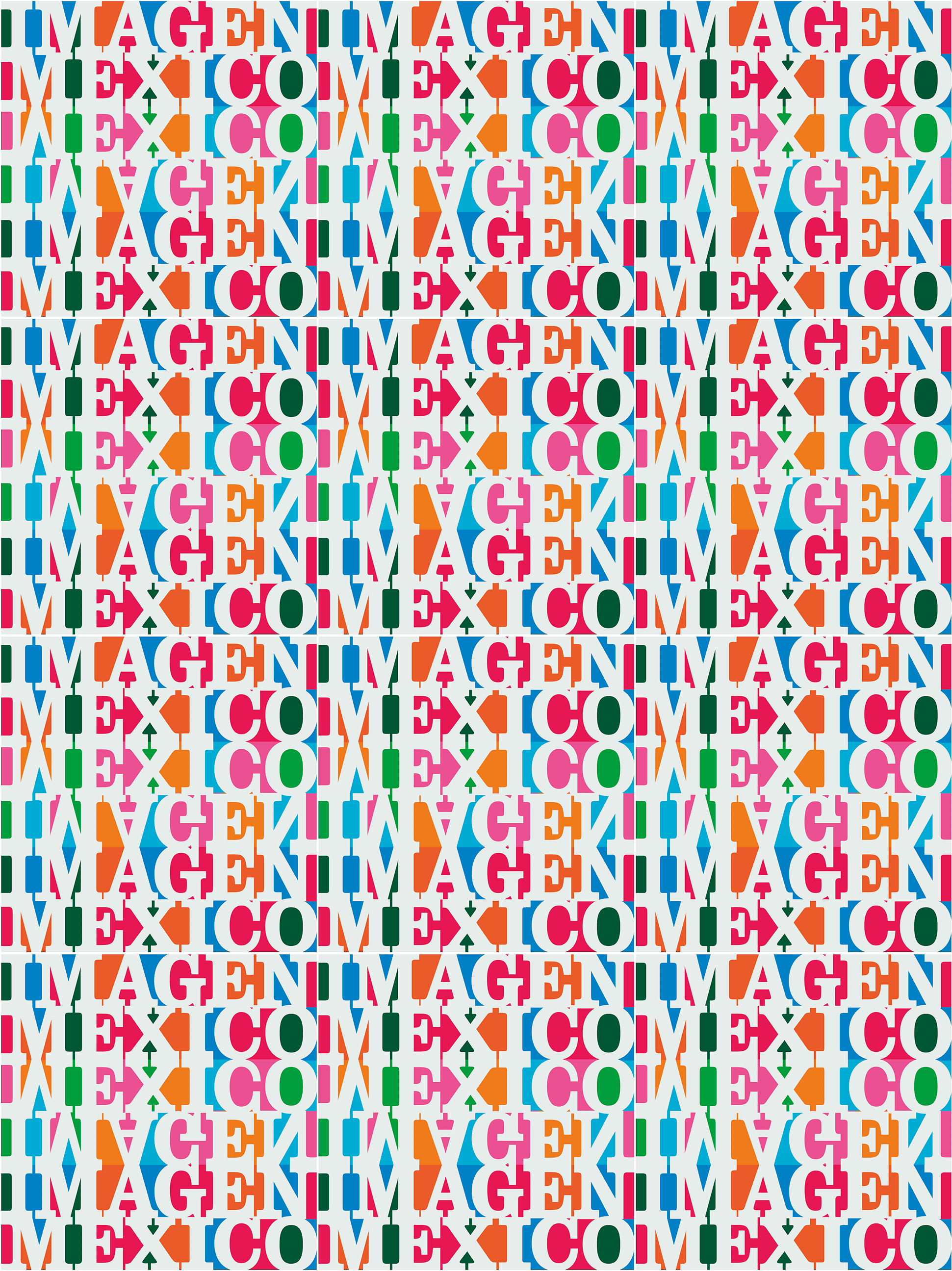
Eduardo Terrazas | Contemporary mural print Imagen de México (Image of Mexico), 2023 | Museo del Palacio de Bellas Artes
After obtaining his architecture degree in 1959, Terrazas lived, studied, and worked abroad until 1966. That year, he returned to Mexico and was enlisted by Pedro Ramírez Vázquez, the President of the Organizing Committee of the 19th Olympic Games, as the Artistic Director and Coordinator of the Olympic Identity Program. Together, they formed a multidisciplinary team that developed one of the most iconic comprehensive visual solutions in the history of that international sporting event. Within the history of Mexican modern design, it represented a paradigmatic case whose impact resonates to this day. The Olympic Identity went beyond graphics and extended to an urban scale. Terrazas coined the term «urban environments» for this type of solution in which art and design were integrated into the urban space, serving both operational purposes and the articulation of a new spatial situation that is aesthetically stimulating and conducive to social interaction.
A core strategy of the team in charge of the Olympic Identity of Mexico 1968 was to draw inspiration from local festive objects and transform them into something entirely new. Enormous sculptures resembling papier-mâché sculptures of Judas figures were created as public art and signage for the sports facilities, and large-scale balloons with the official design of the Olympics were produced. The intention of this strategy was also to reconcile the local with the international. It is known that the official logo was inspired by a Wixárika board, while also resembling the aesthetics of international op art or perceptual art. This vision, in which the traditional and the everyday are seen in a new light and reconfigured, would continue to be present in the artist’s later works, such as his 1980s series Museo de lo cotidiano (Museum of the Everyday).
One year after the Olympics, Terrazas executed another urban environment for the inauguration of Mexico City’s subway. For Imagen México, he created a large-scale photomontage that covered the entire perimeter of the Glorieta de los Insurgentes. Like a collage, it presented the conjunction of different images of the country, its inhabitants, cities, economic activities, and culture. Such images were also used in large-scale slide projections and displayed as photographs in the marquees of the platforms of the new pink subway line.
